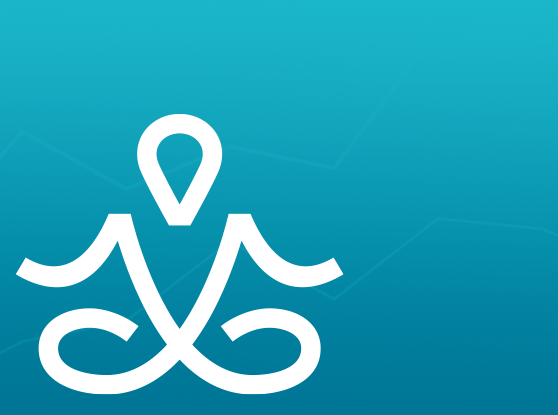Growth Gurus: Jill Hedrick, SVP of Sales at Turnitin

Jill Hedrick is Senior Vice President of North American Sales for Turnitin, a leading educational technology company. She leads the team that sells teaching and learning tools that engage students in the writing process, shares personalized feedback, and ensures originality in written work, all leading to academic integrity and improvement in writing.
Before joining Turnitin, Jill served as Vice President of Partner Accounts at Northwest Evaluation Association (NWEA). She also worked for several technology firms including Farallon Computing (now Motorola), and Dantz Development (now EMC). Over the past decade, Jill was Vice President of Worldwide Sales for software provider Extensis and Vice President of Business Development for Gartner spinoff GCR.
Jill has been highly successful at boosting sales and transforming teams to meet customer needs in technology-intensive companies; it’s her commitment to education and achieving an impact that drives her.
“I realized that what I was doing every day could have a greater impact, more societal value,” she said. “So Turnitin’s mission orientation and the focus making a difference in education is an inspiring and very rewarding part of what I do.”
Jill Hedrick recently sat down with Onsite to talk about her journey, her passion for education, and to offer advice about career and business. She shared her thoughts on navigating change in an enterprise environment, building a competitive culture that fosters healthy collaboration, breaking down silos, and the importance of finding energy in your workday. Read on for some valuable insights.
Hi Jill, let’s start with some basics: what does Turnitin do?
Jill: Turnitin is a company with a mission to make a difference in education. The products that Turnitin builds focus on two important aspects of writing in education: the development of good writing skills, and ensuring that writing is original to maintain academic integrity. It’s important for academic institutions to develop students with good writing skills who can think critically and communicate an original thought. Turnitin’s flagship product, Feedback Studio, checks for originality of content and gives educators technology tools to provide feedback to students on their written work. Our newest product, Revision Assistant, is at the front-end of the writing process, on the development of written essays, and uses machine learning to give students specific and concrete contextual feedback on how to improve their writing. This is essential because when students go on to do whatever comes next in their lives, professionally or academically, they have to be able to successfully communicate their ideas in writing. Our tools are used in over half of higher education institutions in North America and approximately 40% of high schools.
Q: We used Turnitin at my alma mater, so I remember it well so let’s talk about how the Turnitin sales team got to where it is today. There’s always a danger in stable teams and businesses, to adopt a “don’t change a winning team” mentality – this is a dangerous precursor to stagnation. When you first joined Turnitin, you brought along big plans to transform a sales org that was seemingly doing “just fine”. How did you craft your change message? And what did you do to overcome internal resistance?
Jill: Well, in this situation, there was an ownership change, which resulted in a look at the company with fresh eyes and examining how we continue to grow as a business. At that time, we’d just acquired a new company, Lightside Labs, the developers of Revision Assistant, and so we had to rethink our approach from selling one product to multiple products. And we had to revisit shifting customer expectations of how we as a team engage. Customers today are very educated and expect more from the companies they engage with than they did five years ago.
So I started the change process by painting that picture – new owners, new products, and new customer demands.
I first I began collecting data. I sent a survey to our sales team asking, “What’s going well? What’s not working? What’s standing in the way of your success? If you were in charge, what would you do?”
I then presented that information back to the team – highlighting that they knew changes were necessary in some areas and that many of the ideas for change were coming from the team itself. Much of what needed to change was not only a top down decision; we were sharing our mutual thinking. This was important, and it motivated my team to keep communicating ideas for how we could improve, and to have truthful discussions on problem areas and potential solutions.
Q: What’s the best way to engage employees in difficult conversations? And how should leaders approach that from an employee perspective?
Jill: I began by connecting the conversations to the realities of the company, how our business was changing, and what we were doing. Then we asked our team to really connect to the work we do in a way that goes beyond their paycheck, by finding motivation from the educational impact and a mission bigger than themselves. This idea of mission is deeply connected to our culture.
Those early conversations were really about two things: “Showing clearly where we’re going," and “I need everyone on the train." I also made it clear that if the direction we were going was not right for anyone, it was fine to opt-out. But if they wanted opt-in, we wanted them completely committed.
Part of the change process was looking beyond just quota or sales numbers by realizing that in sales someone can hit their numbers and still not be a good cultural fit for the company. In that case, it’s important to be honest about the team and what changes need to be made, so there are no surprises.
Q: You‘ve mentioned that Turnitin publicizes its sales team goals to the wider firm. Have you experienced that internal competition efforts can work at odds with a collaborative and fun work environment?
Jill: We have not had that situation yet, and we don’t want that kind of environment at Turnitin. But we’re mindful of it. Team goals help to hold one another accountable. It also helps build a team approach beyond just sales, and it softens the competitive nature. We're introducing these things gently and trying to keep it positive and fun, while also professionalizing the sales team and defining what high performance looks like.
Q: High performance can take a big hit if it doesn’t come coupled with strong collaboration. We often hear from both sales and marketing teams that broken communication channels are a serious pain point. Sales teams complain that marketing doesn’t give them the data they need, and marketing feels that sales doesn’t follow-up on key leads. What is the sales versus marketing relationship status at Turnitin? Any practical advice for improving collaboration?
Jill: I’d say that sales and marketing are definitely in a committed relationship (laughs)!
At Turnitin, we’re very fortunate to have sales and marketing on the same page. We have a really good working relationship, and the marketing team understands that the success of the company is in hitting our targets from a revenue perspective. It’s all about building that revenue engine.
It’s also important to keep asking questions such as, “Who needs to be part of this decision-making body?" and "How are we going to agree on what matters?" and "What things matter most?" and "How do we measure which particular activities drive the most value?"
And, while it may sound like blocking and tackling, it’s effective to have several joint meetings and set mutually held objectives. That way you know where you’re going and who’s going to do what.
Q: You are a big proponent of shifting the traditional "work/life," "time management" discourse to focus on "energy balance" instead. Can you clarify?
Jill: Sure. One of my personal challenges is to look at the things that make a team highly productive, while not burning out. And one of the things I’ve seen and read about is that it’s not about the minutes and hours, it’s the quality of those minutes and hours.
One of my personal challenges is to look at the things that make a team highly productive, while not burning out. And one of the things I’ve seen and read about is that it’s not about the minutes and hours, it’s the quality of those minutes and hours.
The questions are: How effective can you be if you’re in eight hours of solid back-to-back meetings? What really happens throughout the day? How engaged and contributing are you in those meetings?
There’s a need to be balanced and think about things that refresh you, and to do those things as part of your week. As an example, I have quarterly off-site leadership meetings, which include two to three days of planning and review. To ensure that people are truly present in these meetings, I try to do things differently rather than just grind through eight to ten meeting hours, which is typical of off-sites. Instead, before the meeting starts at 9 AM, participants take that first working hour to do something which fulfills them personally – so that when we start, we’re all ready to be focused. For some people, this means clearing their email inbox, for others it means exercise, or having a leisurely breakfast with other people.
The off-sites were the start of rethinking what high performance means, which led to the idea that the key to productivity is managing your energy, not managing your time. And now I’m not just trying to model that behavior but also show that there's science behind it.
Q: Final words of advice to other CROs?
Jill: First, hire the best people you can find. Don’t settle. Invest in that process. Hiring the right people will fuel your company’s growth. Second, if you’re leading people, hire people who are better than you. Understand and be honest about what your gaps are and find people who can fill them.
Set the vision for your team and discuss how you’re going to measure it, so people know what’s expected. Make sure that you’re giving your team what they need to be successful. Whether that’s training or continuing to facilitate positional leadership – identify and invest in your high flyers. The only way to sustain growth is through your people.
And finally – renew yourself and invest in maintaining your own energy. Otherwise, you can't be an effective leader.








